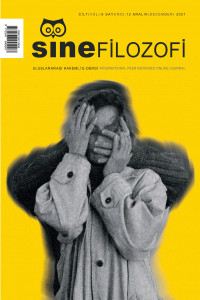Mimarlık ve Sinema Arakesitinde Yer ve Yersizliği Okumak: Ahlat Ağacı Filmi’nde Ruhun Yitimi
Reading Place and Placelessness at the Intersection of Architecture and Cinema: Loss of the Spirit in Ahlat Ağacı (The Wild Pear Tree)
Author(s): Gülşen Ergün Bilgili, Pınar Dinç KalaycıSubject(s): Architecture, Contemporary Philosophy, Film / Cinema / Cinematography, Ontology
Published by: Serdar Öztürk
Keywords: Place; Placelessness; Architecture; Spirit of the Place; Nuri Bilge Ceylan; The Wild Pear Tree;
Summary/Abstract: According to Norberg-Schulz (1980); man lives when he can navigate within and identify himself with an environment, or in short, experience the environment meaningfully. Man tries to take root and dwells in nature and land. Architecture starts from ‘place’. The place accommodates, creates, and transforms architecture. Building and dwelling are linked to man’s relationship with things in place and his efforts to make sense of the place (Heidegger, 1971). Discussing that it has become impossible to build a life with an identity in a built environment that has started to become displaced, the study, which deals with dislocation as a concept and a problem that opens a critical window, argues that the problem does not reduce the purely plastic form of architecture, that is, its spatial characteristics; At the same time, it differs from other works in that it tries to understand the semantic form, that is, its spiritual side, through the critical language of cinema. This study, by bringing together the intellectual backgrounds of the disciplines of cinema and architecture, exemplifies the concept of placelessness in the context of Nuri Bilge Ceylan’s Ahlat Ağacı (The Wild Pear Tree, 2018) movie; relates Heidegger, as it constitutes the basic literature of place discussions, Norberg-Schulz for introducing the concept of the spirit of place for the first time, and Relph’s because he discusses placelessness together with human experience, discussion of place and place with the loss of the spirit; analyzes the loss of the spirit through concepts gathered under three headings: (i) space where the actions take place, (ii) district, region, home, (iii) identity, character, existence; and examines the scenes and dialogues that correspond to each concept. The main acceptance of the study is that placelessness is related to loss of the spirit; is that the loss of the spirit is not only the loss of the spirit of the place (genius loci), but also the loss of the spirit of the human and subsequently of the society. In the study, the problem of placelessness, which started with modernism, changed shape with postmodernism, and which continues to be up-to-date by being moved to different points with the age of fast consumption we are in, and which constitutes an argument for interdisciplinary critical studies; intersects the disciplines of cinema and architecture, and proposes the concepts of loss of the spirit and deciphering this loss as a model for future cinema-architecture studies as a whole.
Journal: SineFilozofi
- Issue Year: 6/2021
- Issue No: 12
- Page Range: 1025-1043
- Page Count: 19
- Language: Turkish

